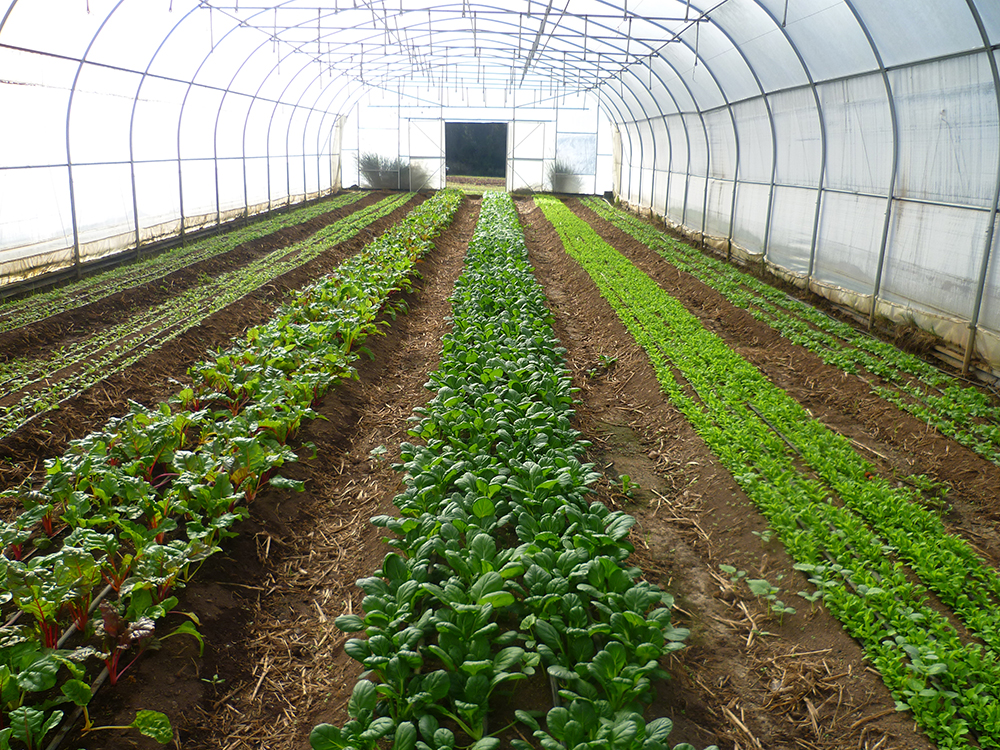
By Clint Thompson
Hoop houses help protect vegetables from rain-induced diseases while providing organic growers the opportunity to produce a crop throughout the year, according to Elizabeth Little, University of Georgia associate professor and Extension plant pathologist.
BETTER QUALITY, LESS SPACE
Hoop houses, also known as high tunnels, are types of greenhouses that help organic growers produce high-quality crops if managed appropriately.
“These growers are producing all winter in tunnels and selling direct to customers and restaurants,” Little said. “The houses are also useful in the summer to avoid foliar diseases, which are very difficult to control in the field when conditions are wet. Hoop houses give you a controlled environment so you can grow a better-quality crop.”
Hoop houses are used extensively in the Georgia Piedmont and further north. A variety of vegetables and flowers are produced, including lettuce and other greens during the winter months, and tomatoes and peppers in the warm season. Hoop houses are a valuable production tool, but the growing space is often the limiting factor.
Hoop houses vary in size but typically average 40 feet wide and 100 feet in length. They are unheated plastic-covered houses with roll-up sides that allow for ventilation to control temperature and humidity.
“There’s more demand for local organic produce than there is supply. The local organic produce is high quality … The problem is we have a challenging hot and humid climate which leads to more disease and pests,” Little said.
BEWARE OF ROOT-KNOT NEMATODES
Little stresses that root-knot nematodes are a potential problem for both home and organic vegetable growers across the state. Root-knot nematodes are tiny parasitic worms that feed on roots of many plants and cause a loss in productivity. Most vegetables are highly susceptible to nematode damage.
A University of Georgia Cooperative Extension Survey of 431 vegetable fields found that more than 60 percent contained root-knot nematodes. These pests enter plant roots and feed on nutrients. They quickly produce eggs and eventually, as more nematodes infect, the roots swell into characteristic galls. The damaged roots result in reduced plant growth and lower yield potential.
Root-knot nematodes can increase to high numbers in hoop houses due to warm temperatures, loose soils and intensive production of susceptible crops year-round. Cover crops are usually grown in fields part of each year, which can keep root-knot nematode numbers low, but hoop houses are often kept in production longer due to economics.
“Root-knot nematode damage in organic high tunnels is becoming more of a problem in Georgia,” Little said. “We’re approaching the problem with the mindset that you’ve got to balance the use of organic best management practices to keep numbers low with the economics. After a highly susceptible summer crop, such as tomato, you try to grow a fall crop like carrots and end up with damage on the root crop from the nematodes.
“We’re looking at ways to break that cycle. I have been working with growers on optimizing the length of time for summer cover cropping and solarization, as well as incorporating different rotations and organic amendments to lower nematode numbers. The goal is to get root-knot nematode numbers low enough so you can successfully produce the next crop, which is the same goal in both conventional and organic soils when managing nematodes. The nematodes never disappear entirely.”
(For an outlook of organic farming, see Future of Organics.)









